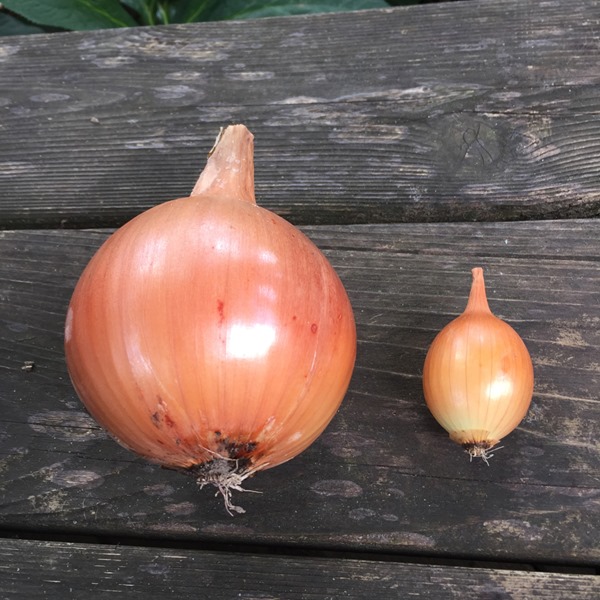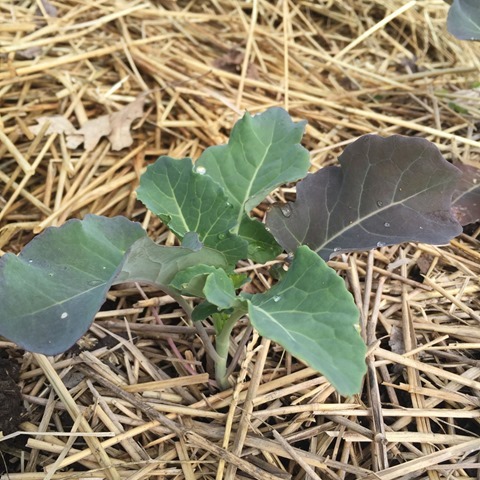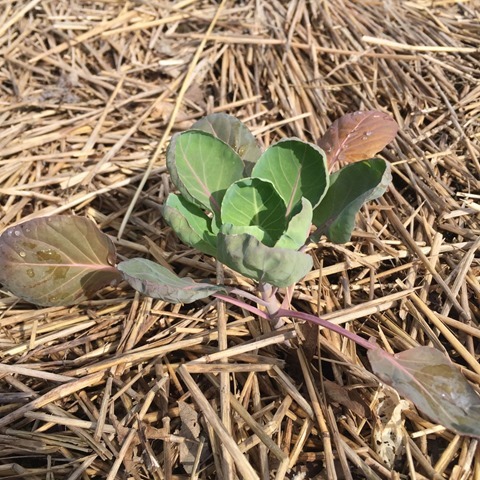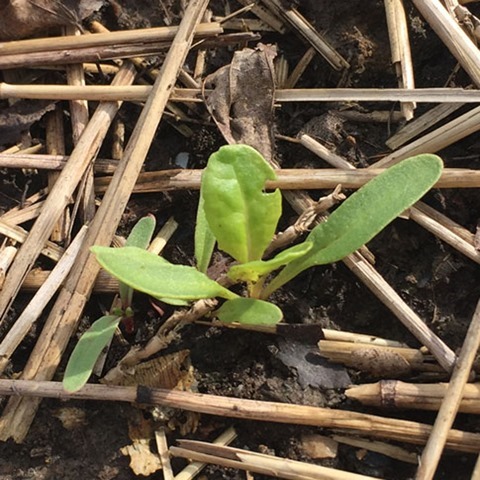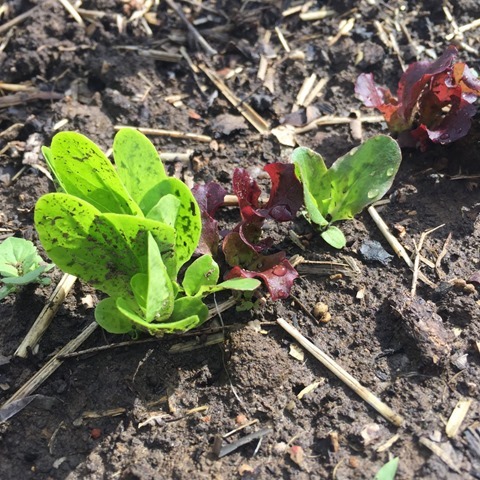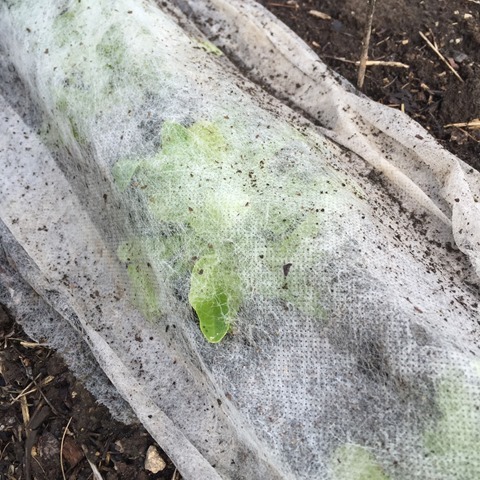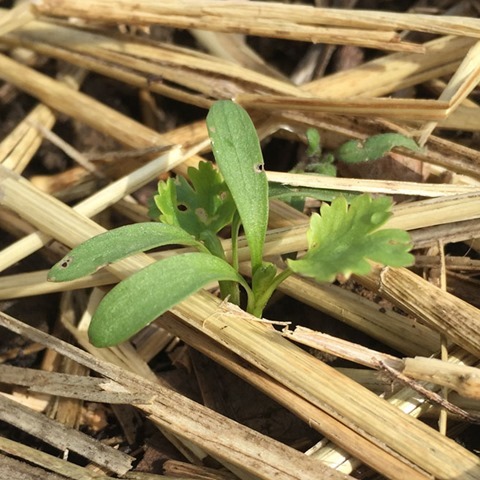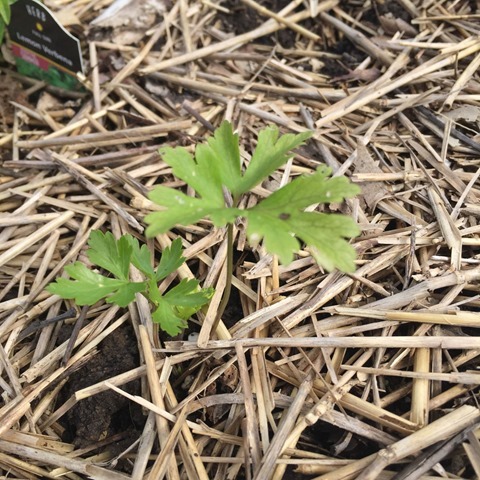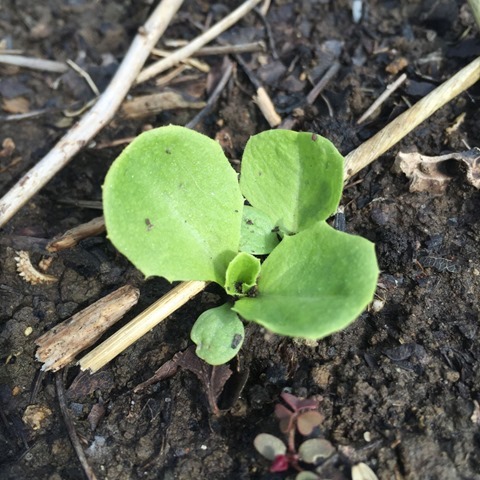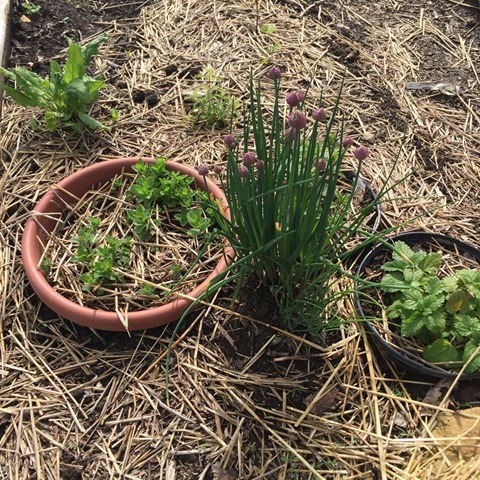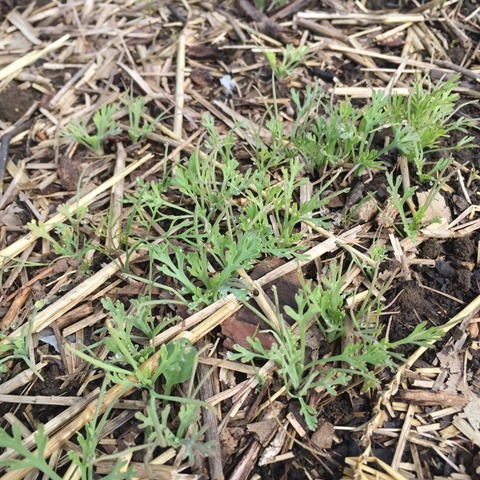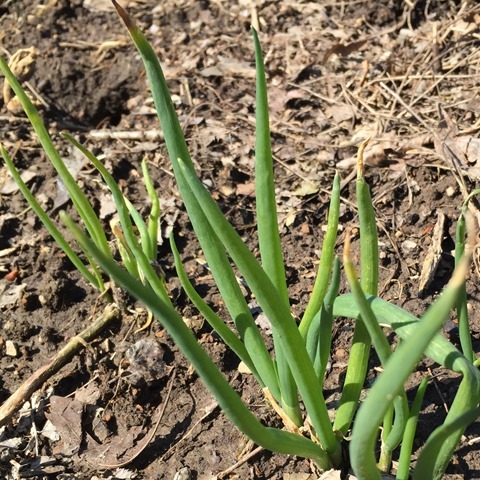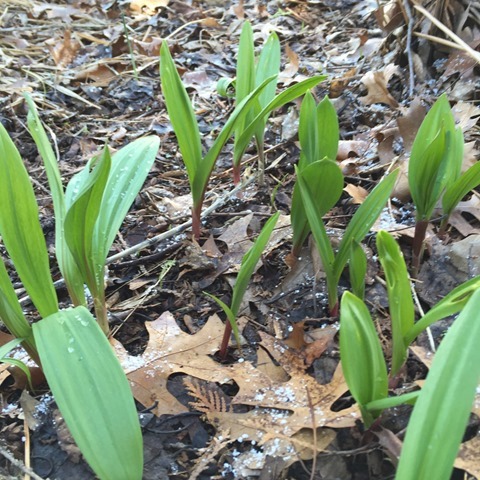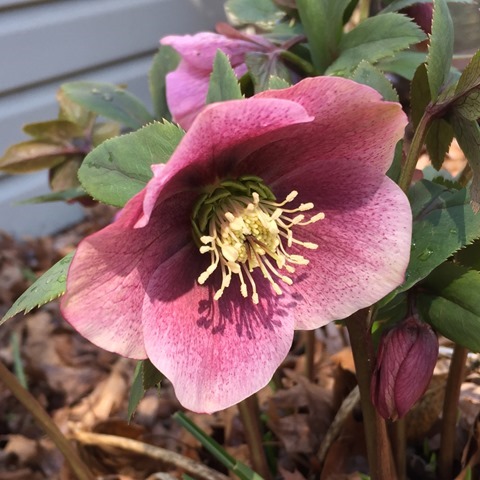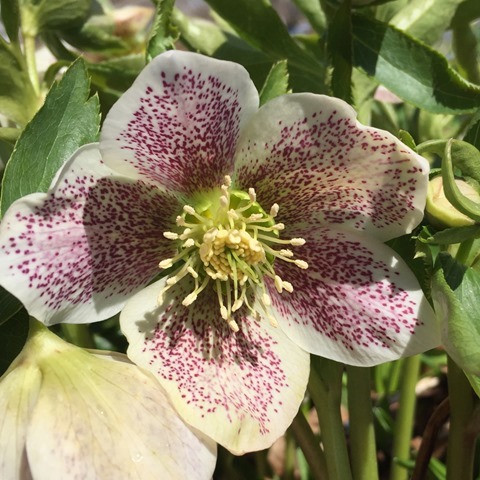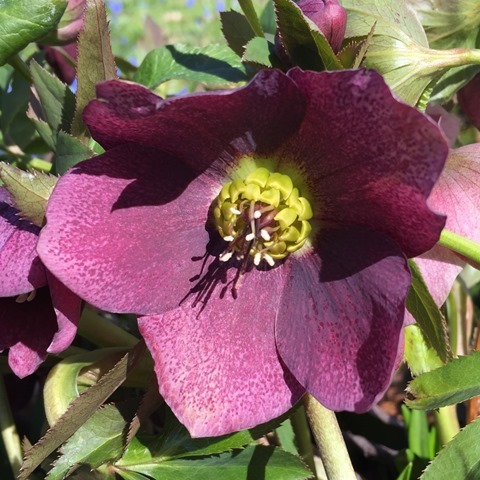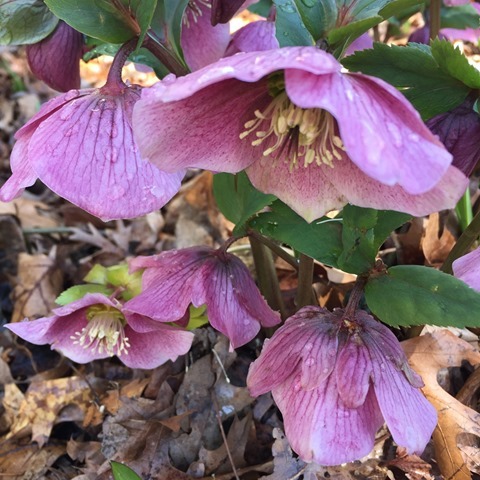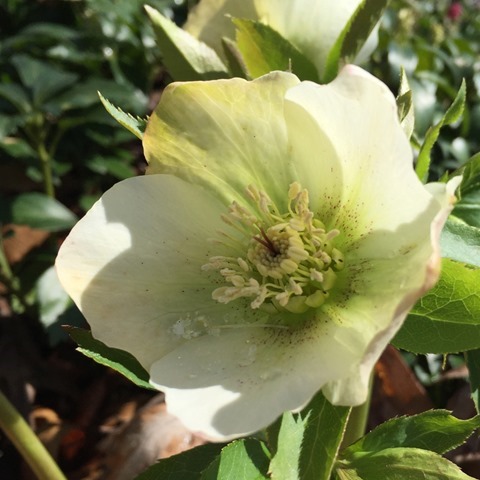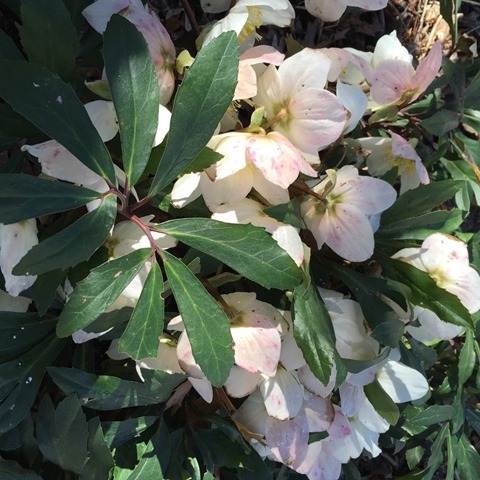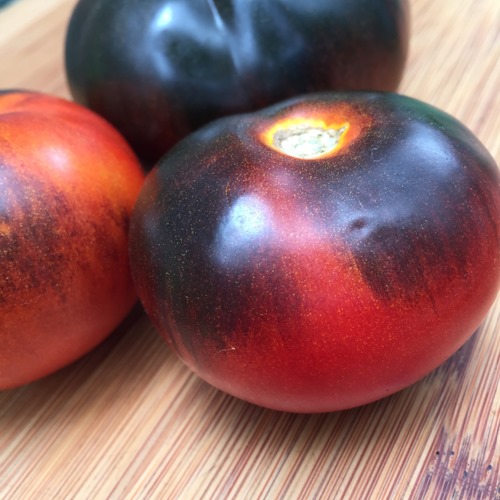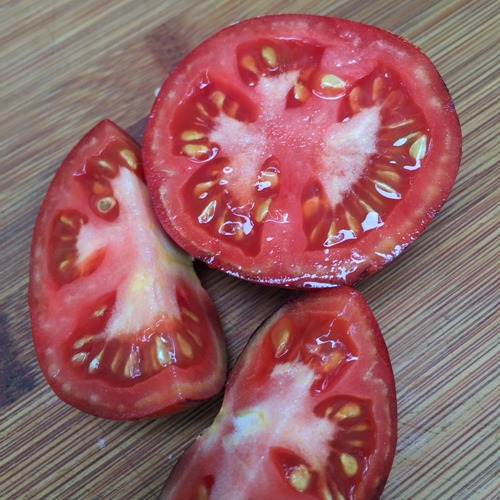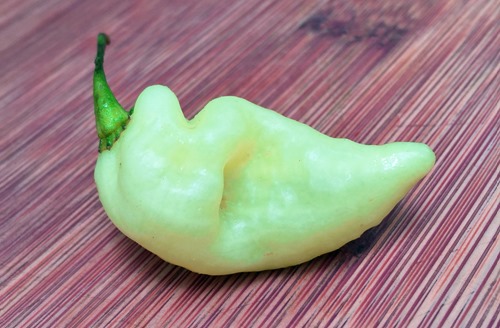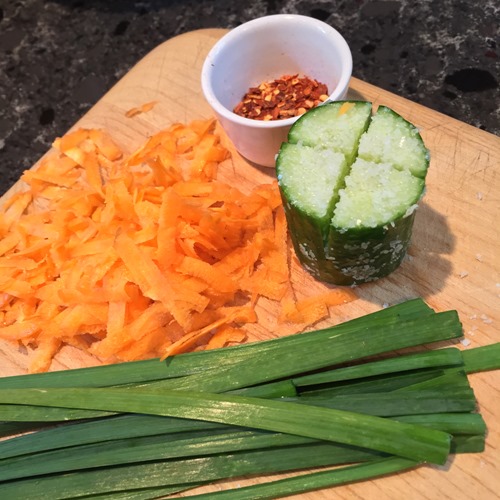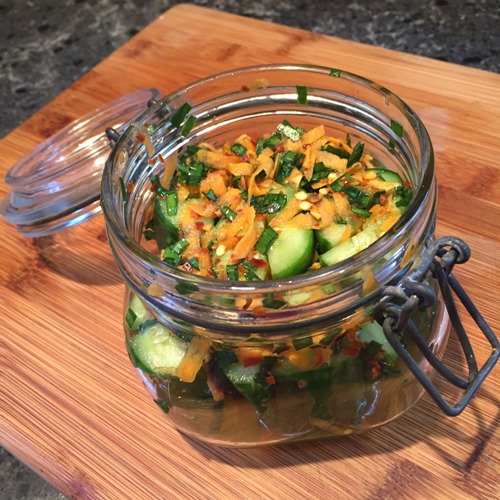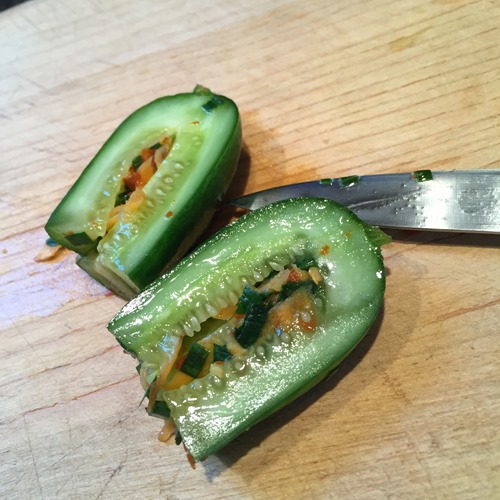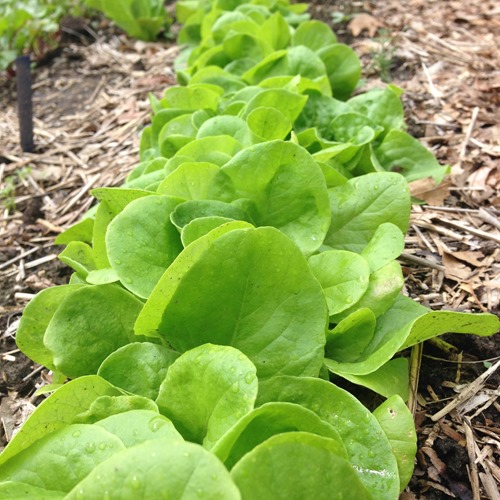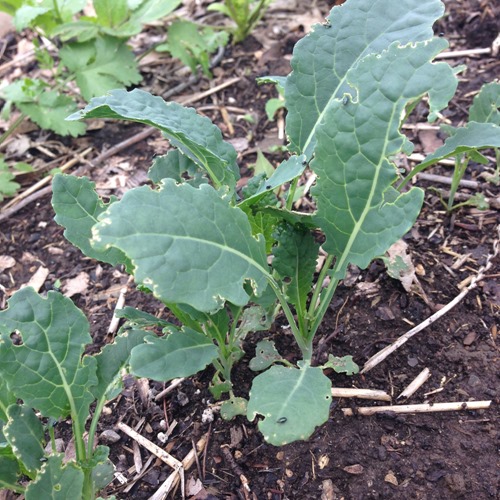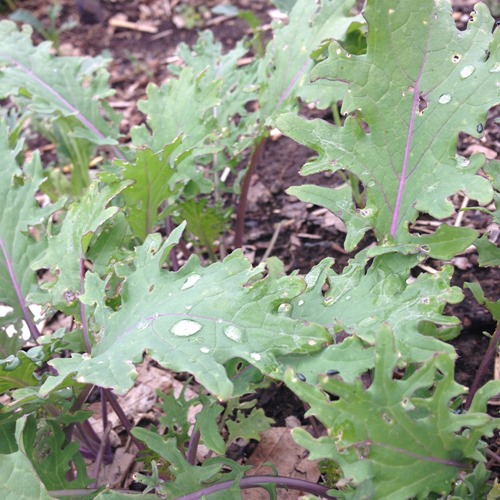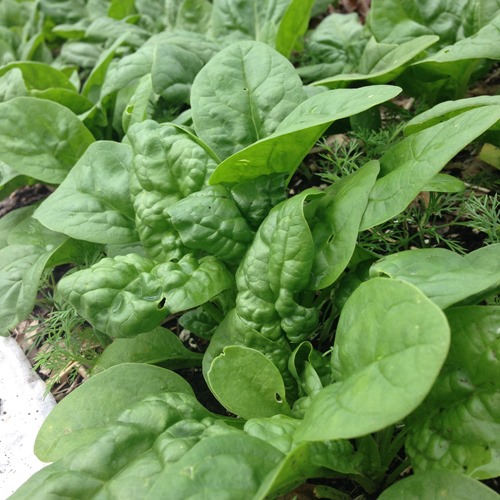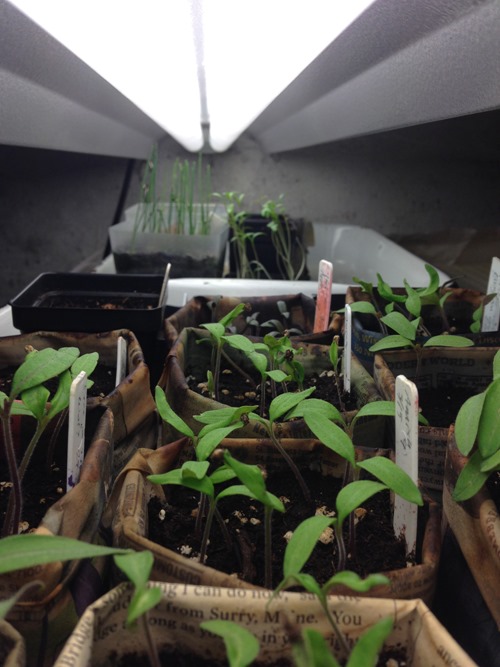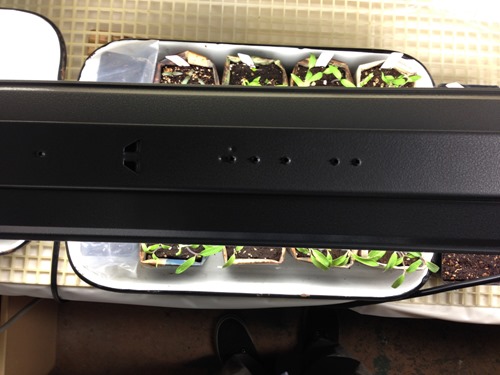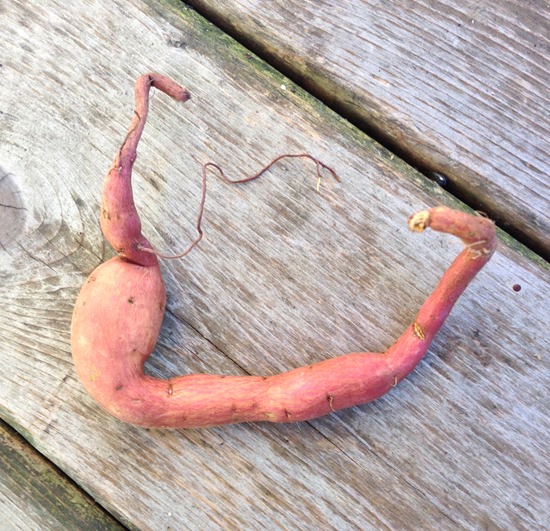Today I went up to the garden and took advantage of a rare period between rainy days to do some weeding. The soil was nice and moist from the aforementioned frequent rains so the weeds came out easily.I got the whole garden done in no time at all, including some grassy edges that may have extended into neighboring plots.
I’ve found over the years that one of the easiest ways to keep records of what the state of the various things in the garden is at any given time is to just take pictures. I can look through them by the date they were taken and get an idea of how different seasons measure up to each other. So, today after the place was tidied up I went around and snapped some images. Warning: there are a lot of them!

Look! The first tomatoes are forming! Not surprisingly they are a cherry variety. This one is ‘Mexico Midget.’ Several of the tomato plants are blooming.

The tomato plants are looking pretty good. When I set them out they stayed pale and lackluster long enough that I was beginning to worry about replacing them all. Once they settled in and probably grew roots on the long stems I buried they greened right up. I went around and plucked off the lower leaves of all of them and started snapping out suckers already. They’re a little shy of being ready for tying up, but soon. I’m trying an experimental method of my own design this year that I’ll share with you later.

The pepper plants we purchased are well ahead of the ones I started. I only got a few just for a bit more variety.
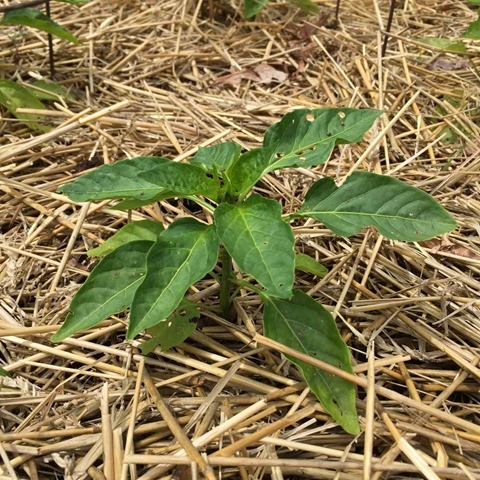
My own peppers looked pretty lame when they went in but have started to grow again, like the tomatoes.
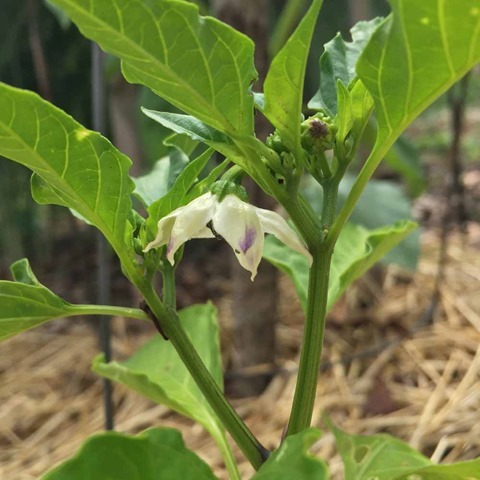
The purchased poblano is the first pepper to bloom this season.
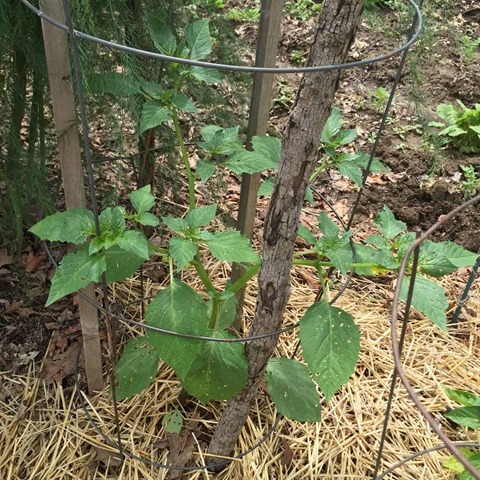
The tomatillo is doing well and also blooming already.

The basil, on the other hand, looks awful. All of it. I may resort to purchased plants.
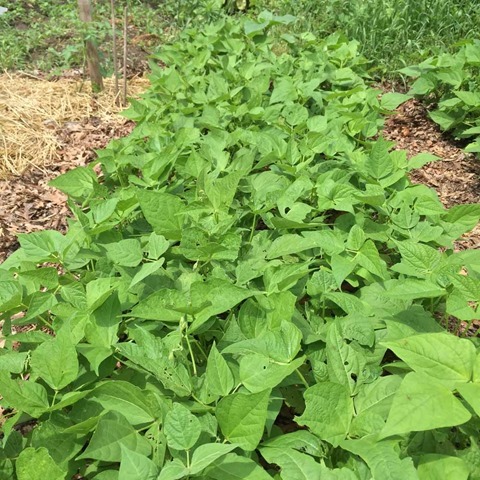
The bush beans are looking good. There are a few holes but nothing serious.

I scattered some sweet alyssum plants around the garden and they all immediately stopped blooming. I’m glad to see they’ve started up again. Pollinators love this stuff.

Lentils, the “fun” crop of 2015 are looking great at the moment. I like their leaves.
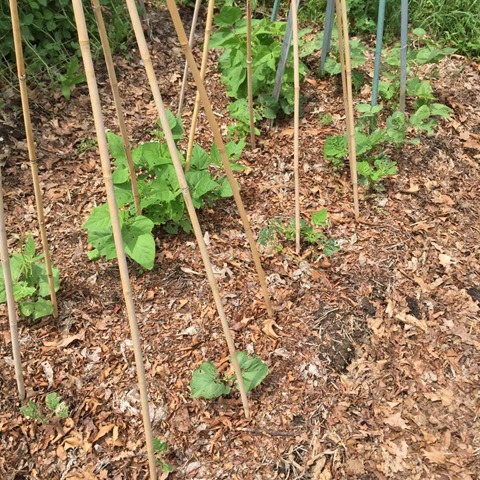
The pole beans all look pretty bad.
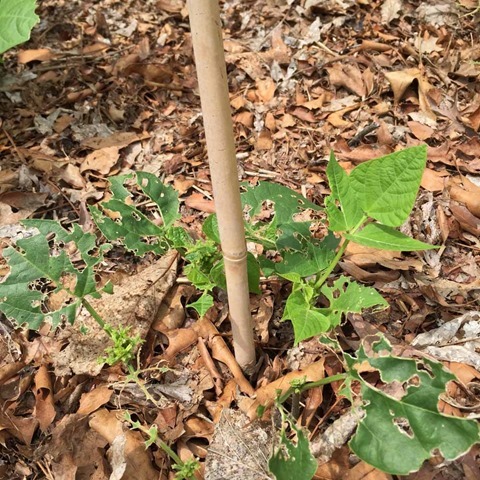
Something is chewing the heck out of them. I looked for bean beetles but didn’t find any adults, eggs or larvae. I hope they recover.
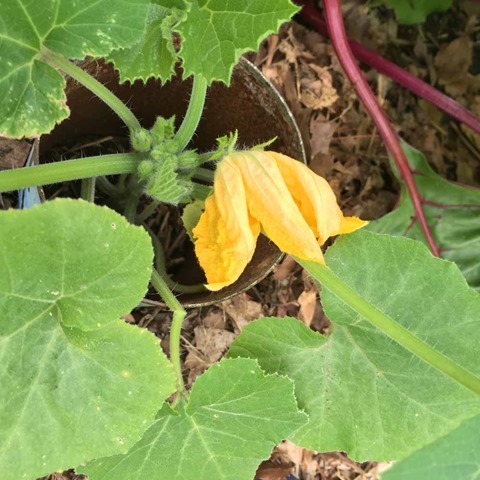
One of the bush squashes is blooming. I’m growing three varieties this year and I forget which one this is.
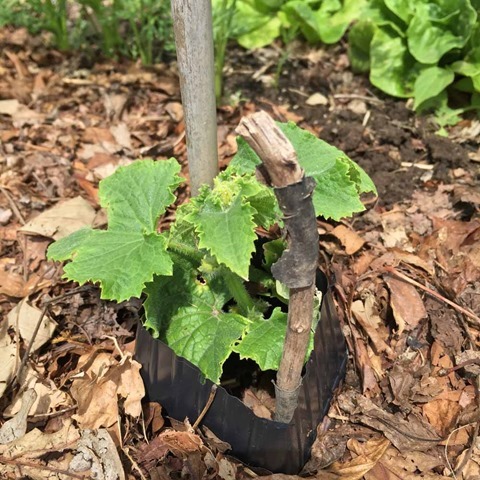
Bush cucumbers are likewise doing well after a slow start. I have cans or pots around all my cucurbits after losing one to a cutworm.

Carrots are unimpressive. These are being overgrown by the lettuce whose days are probably numbered. Even my big salads aren’t big enough to keep up. I’m making a note of exactly how much to plant next year. It will be much less.
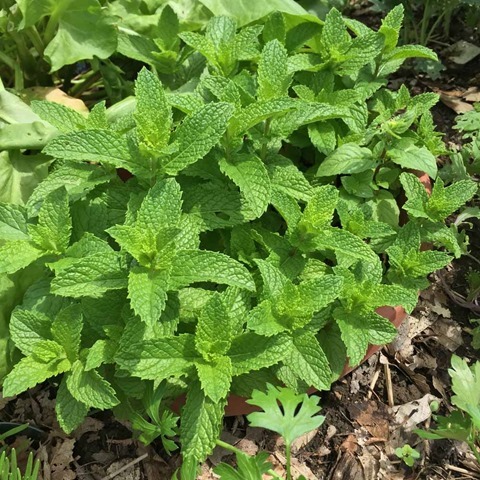
The mint is looking pretty chipper. Could be tabouli time soon if the parsley would take off.
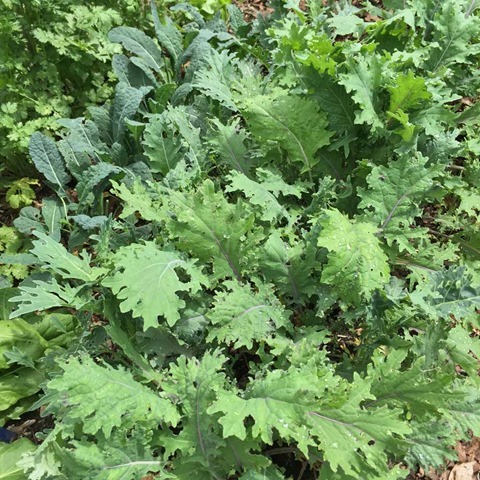
Kale is doing well having apparently outgrown the flea beetles. I’m not crazy about the taste all by itself but I’ve been putting it in salads. Dehydrator kale chips may be in order, too.
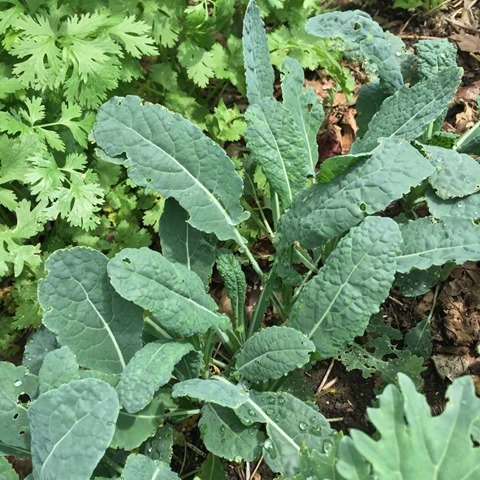
Here’s the black kale.

The cilantro is about to bloom and get on with becoming coriander. I’ve got another sowing in and I should probably do a third soon so I can be sure to have some when salsa canning time comes.
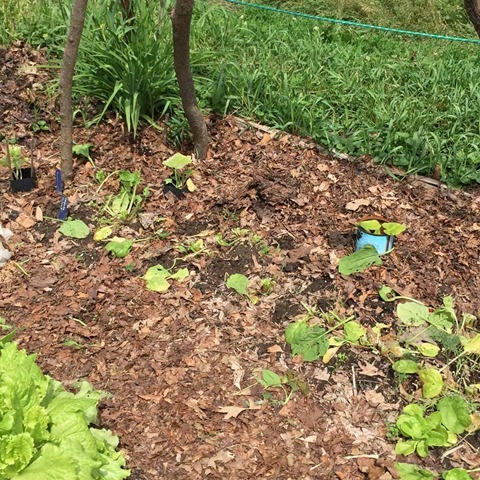
Here is how it looks under the gourd trellis after I ripped out the last of the spinach. There are three gourd plants and four more bush squash in there now. The spinach had to go as it was starting to shade them out.
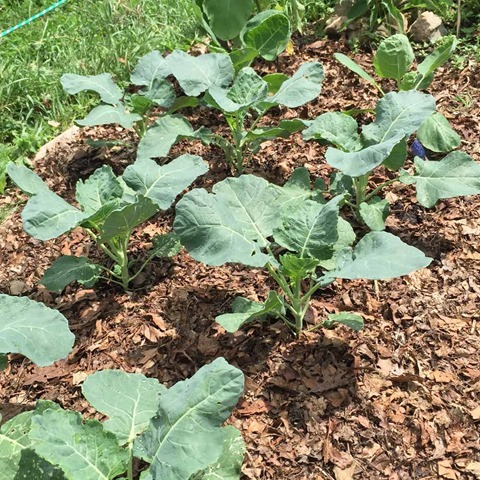
The broccoli (and Brussels sprouts there in the background) are doing fabulously. I got them in late but expect they’ll grow fast now and we’ll be munching on them soon.

Onions are bulbing up! A few tried to flower but I nipped that in the bud.
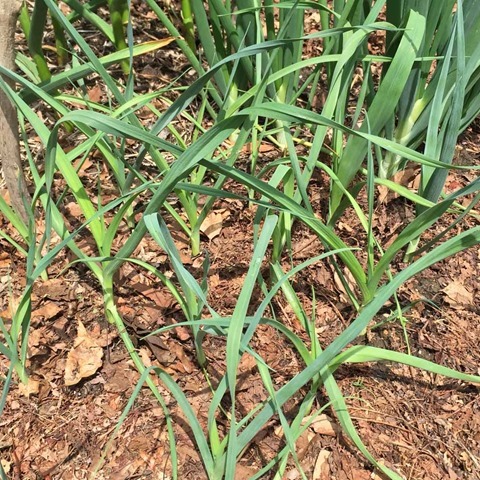
I’m liking how the leeks look. They took foreeeeeeeeever to get going. Hard to believe that those little, threadlike plants can turn into a vegetable as big as my spindly arm. We’re going to keep an eye on them this season and start eating them before they get gigantic. I promise.
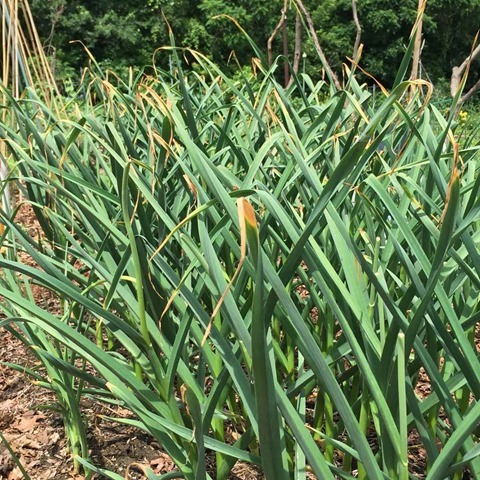
The garlic scapes were all snapped off the other day and now I’m noticing some leaf tips starting to brown—the first signs that they’re getting ready for harvest in a few weeks!

Snap peas are producing now. Gonna have to snack on a lot of these to keep ahead of them. I did two plantings to extend the harvest but I see the second one is starting to form pods, too. Next year: plant shorter rows longer apart, maybe three weeks instead of two if I can start early enough.

This is the smaller parsley. The other one—I only had two seedlings make it—is much bigger but in a less photogenic location.
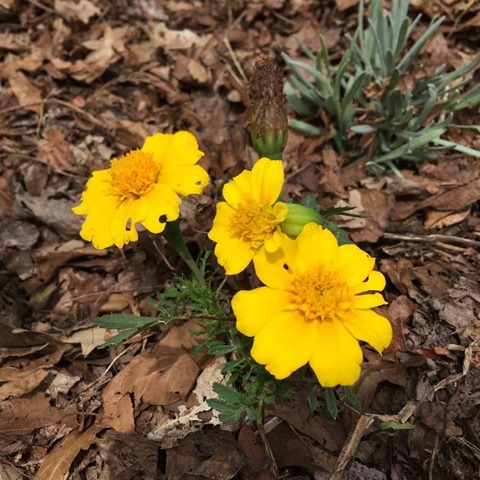
In addition to the alyssum I planted marigolds. This is one of the better looking ones. Most don’t have any flowers at all on them. They’re taking their time getting established, I guess.
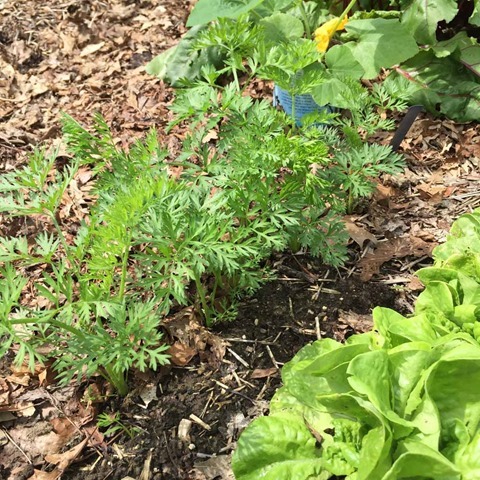
The other end of the unimpressive carrot row. For some reason there is a big gap in the middle of it.
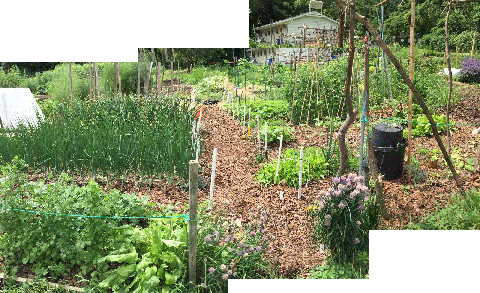
Finally, I made a rough panoramic collage of the garden from the north. Definitely getting green and when the tomatoes, beans and gourds grow up their respective poles it’s going to look like jungle!


